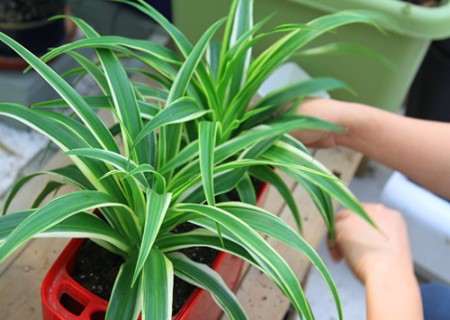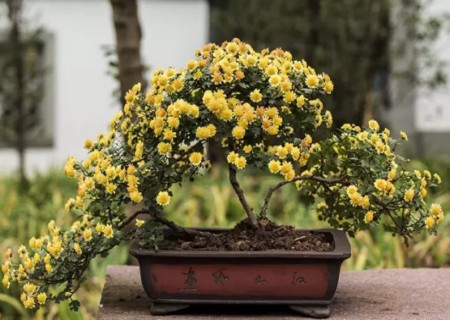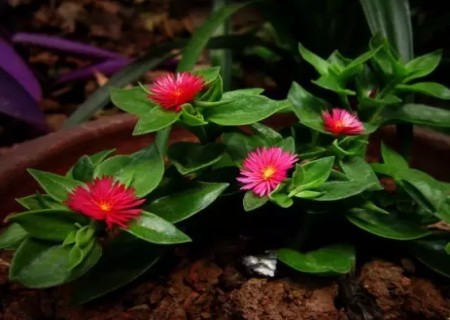Planting method of potted Phnom Penh orchid
Phnom Penh Cymbidium, Liliaceae, perennial evergreen herb, is also a kind of Cymbidium. Leaves are broad linear, light green, born on short stems, with large cylindrical fleshy roots, racemes 30-60 cm long, curved and drooping, white florets; often produce clusters of rooted plantlets formed by plant buds on flower stems, which is very interesting.
Phnom Penh grows fast and is easy to cultivate. It can be cultivated and appreciated all the year round in a brighter room. It is one of the most suitable species to be suspended or placed on the top of a cupboard or flower rack. Phnom Penh hanging orchid is good at eating poison, put a few pots in the newly decorated house, can suck up formaldehyde and other harmful gases, it is really a green air purifier, can absorb formaldehyde and other harmful gases, purify the air, such as formaldehyde, nicotine, etc., there is a green in the house, with vitality, people will be pleasing to the eye when they see it, and feel at ease, which is one of the essential plants in life. Let's introduce the planting method of Phnom Penh orchid:

1. Soil requirements
Phnom Penh has strong adaptability, does not choose soil, is more drought-resistant, but not cold-resistant, and is not demanding on soil, and generally grows better in well-drained, loose and fertile sandy soil. Generally, we can choose Dvordo organic nutrient soil. If the air permeability and water permeability of the basin soil are poor, the water accumulation of the basin soil is not dry for a long time, and it is difficult for the root system to breathe, which leads to the yellowing of the leaves, the soil should be loosened and the moisture should be controlled in time.
2. Cuttage propagation
Phnom Penh Cymbidium can be propagated by cutting, ramet, sowing and other methods, mainly by cutting propagation, which can be carried out at any time from spring to autumn. Cut the clustered stems and leaves on the stolon of Cymbidium (in fact, it is a new plant larva, with leaves on the top and air roots at the bottom), plant it directly into a flowerpot and keep it in the shade. Be careful not to bury it too deep when cutting, otherwise it is easy to break your heart.
3. Lighting requirements
Phnom Penh orchids like semi-shady environment, spring and autumn should avoid strong direct sunlight, summer sun is particularly strong, can only see some oblique light in the morning and evening, during the day need to cover 50% of the sun's 70%, otherwise it will make leaf tips dry, especially flower and leaf varieties, more afraid of strong sunlight, Phnom Penh orchids grow more beautiful in places with weak light, yellow Phnom Penh orchids are more obvious, leaves are brighter. But it should be more sunny in winter in order to keep the leaves tender and fresh green.
4. Temperature control
Phnom Penh likes warm and humid climate and is afraid of cold and high temperature. it grows fastest at 25 ℃, stops growing above 30 ℃ and below 0 ℃, and its leaves are easy to turn yellow and dry. In winter, when the room temperature is more than 12 ℃, the plant can grow normally, draw leaves and blossom; if the temperature is too low, it will grow slowly or dormant; if it is lower than 5 ℃, it is prone to cold injury.
5. Watering method
Phnom Penh orchids like a humid environment, and the basin soil is easy to keep wet. Summer watering should be adequate, around noon and evening should also spray water on the branches and leaves, timely cleaning the dust on the leaves to prevent the leaves from drying up. Specific methods can refer to the main menu → novice planting → watering method → teach you the correct watering method. However, the fleshy roots of Phnom Penh can store a lot of water, so they have a strong ability to resist drought and will not dry to death without watering for several days. Under 5 ℃ in winter, less watering, basin soil should not be too wet, otherwise the leaves will be easy to yellowing.
6. Fertilization method
Phnom Penh is a more fertilizer-tolerant foliage plant, if the lack of fertilizer and water, it is easy to scorch head aging, leaves yellowing, loss of ornamental value. From late spring to early autumn, Devodo series liquid fertilizers with a proportion of 300% can be applied every 7-10 days, but less nitrogen fertilizer should be applied to Phnom Penh orchids, Jinxin and other flower and leaf varieties, so as not to fade or even disappear, affecting their appearance. Devodor bio-organic fertilizer granules can be properly applied. Stop fertilizing when the ambient temperature is below 4 ℃. Pay attention to the frequent application of thin fertilizer, fertilizing too much, exceeding the needs of the plant. At the beginning, the leaves are shiny and uneven, after the roots rot, the leaves will be yellow. Should stop fertilizing, irrigate more water, or turn the pot to clean the root and replace the new soil.
7. Turn the basin and change the soil
In the management of potted Phnom Penh orchids, in order to have luxuriant stems and leaves, the soil and pot should be changed once in March every year. If the basin is deeper and the base fertilizer is more sufficient, the basin can be changed once every two years. When turning the basin, knock the plant out of the basin, cut off the withered roots and excess roots, replace it with the new Dvordo organic nutrient soil, and then apply the Dvordo bio-organic fertilizer as the base fertilizer. After planting, put the seedlings in a warm and semi-overcast place.
8. Pruning method
The general height is not to meet, and should pay attention to ventilation. The lower withered leaves and yellow leaves should be picked at any time, and the yellow head should be cut off obliquely with scissors when the leaf tip is yellow. Cutting off some of the old leaves of Phnom Penh in the first and middle of May will promote the germination of more new leaves and small Phnom Penh.
A little knowledge:
Phnom Penh Cymbidium is a perennial herb, Liliaceae, Cymbidium, the leaves are wide linear, narrow and flexible, tender green, growing from the rhizosphere, the leaves droop from the basin, flutter with the wind, just like the fairy in the air, and like the crane that spreads its wings, it is a popular hanging foliage plant. The most interesting thing is that this kind of orchid will open small white flowers in summer and produce clusters of rooted plants formed by the teeth on the stems of the flowers.
Phnom Penh hanging orchids are "home-grown hanging orchids, dirty ghosts are scared", and European and American countries are also known as "spider grass". The flower beds on both sides of the city road are surrounded by the roots of big trees, and this kind of orchid is often cultivated to beautify it.
Time: 2019-05-24 Click:
- Prev

Cultivation techniques of Chrysanthemum Bonsai
Chrysanthemums have been loved by people since ancient times. Different from other flowers, chrysanthemums bloom proudly in late autumn and conquer the hearts of many people with noble and elegant flowers. Chrysanthemum bonsai, also known as bonsai chrysanthemum, is based on chrysanthemum, with dead wood stakes, rocks and other materials.
- Next

How to plant peony orchid-the planting method of peony orchid
Peony hanging orchid, also known as dew grass, flower vine grass, heart leaf ice flower, dew flower, sun rose, sheep horn hanging orchid, cherry orchid and so on, actually does not belong to the hanging orchid, because its branches are soft, elongated and semi-creeping, and the branches fall down. It looks very similar to the hanging orchid, so it has been maintained as a hanging orchid. Its leaves are thickened.
Related
- Fuxing push coffee new agricultural production and marketing class: lack of small-scale processing plants
- Jujube rice field leisure farm deep ploughing Yilan for five years to create a space for organic food and play
- Nongyu Farm-A trial of organic papaya for brave women with advanced technology
- Four points for attention in the prevention and control of diseases and insect pests of edible fungi
- How to add nutrient solution to Edible Fungi
- Is there any good way to control edible fungus mites?
- Open Inoculation Technology of Edible Fungi
- Is there any clever way to use fertilizer for edible fungus in winter?
- What agents are used to kill the pathogens of edible fungi in the mushroom shed?
- Rapid drying of Edible Fungi

